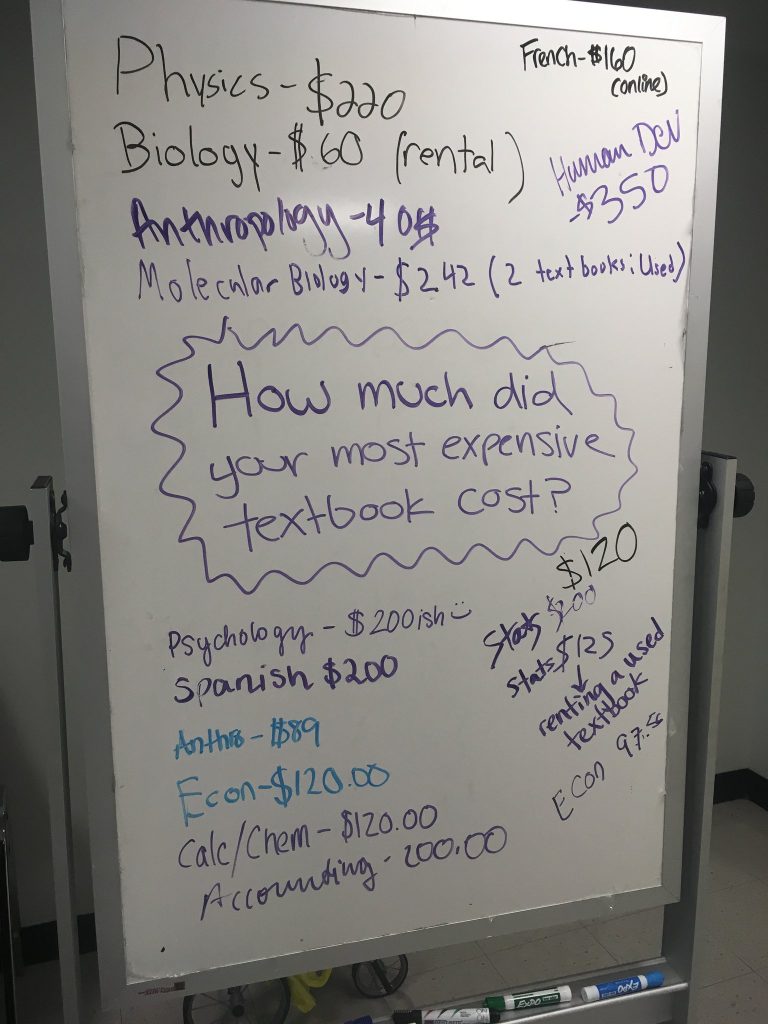
Photograph by Emily Toner.
At the start of each academic year, library staff set up a table in Paley to talk to Temple students about their textbooks. Most students don’t know that college textbook prices have risen 1,041 percent since 1977. They just know that textbooks are too expensive.
In order to save money, Temple students employ a number of different strategies. Many take advantage of interlibrary loan or read their textbook at the library on reserve. Some split the cost of the book with other friends in their class. Others look for a pirated version online.
This year, we heard from a neuroscience major who spent $300 on a textbook, and a political science major who spent $200 on a Spanish textbook. A sophomore told us how the textbook in her psychology class cost $200. On the first day of class, the professor asked, “How many of you have the textbook already?” and a number of people raised their hands. She felt embarrassed that she didn’t have the textbook yet, but she simply didn’t have the money to buy it. Several students told us that they ended up dropping a class once they found out the cost of the textbook.
It doesn’t have to be this way. There are a growing number of low and no-cost alternatives to commercial textbooks that can save students money while still providing them with the same or better learning outcomes.
Open Educational Resources (OER) are learning materials that are free to read and reuse. OER can take many different forms, but one of the most common are open textbooks. In many ways, open textbooks are just like regular textbooks: they are written by experts in the field and the content is subjected to rigorous peer review. Some even come with ancillary materials for instructors, such as homework problems or slides.
However, there are also some important differences. First, open textbooks are free to read. How is this possible you may be wondering? Well, instead of making money off of sales, authors of open textbooks are often paid a stipend upfront for their work. Open textbooks are funded by foundations, the federal government, universities, libraries, and other entities who want to ensure that all students have access to the learning materials they need in order to succeed. Second, because they are openly licensed, open textbooks can be revised, repurposed, or reused in order to fit the specifics of the class, all without seeking permission from the copyright holder.
Want to learn more about OER? Have questions about who is using open textbooks in their classes at Temple? Get in touch with your liaison librarian or sign up for one of our upcoming workshops:
“Integrating Open Access Resources Into Your Canvas Course” (10/23/18)
“Using Open Textbooks in the Classroom” (10/25/18)